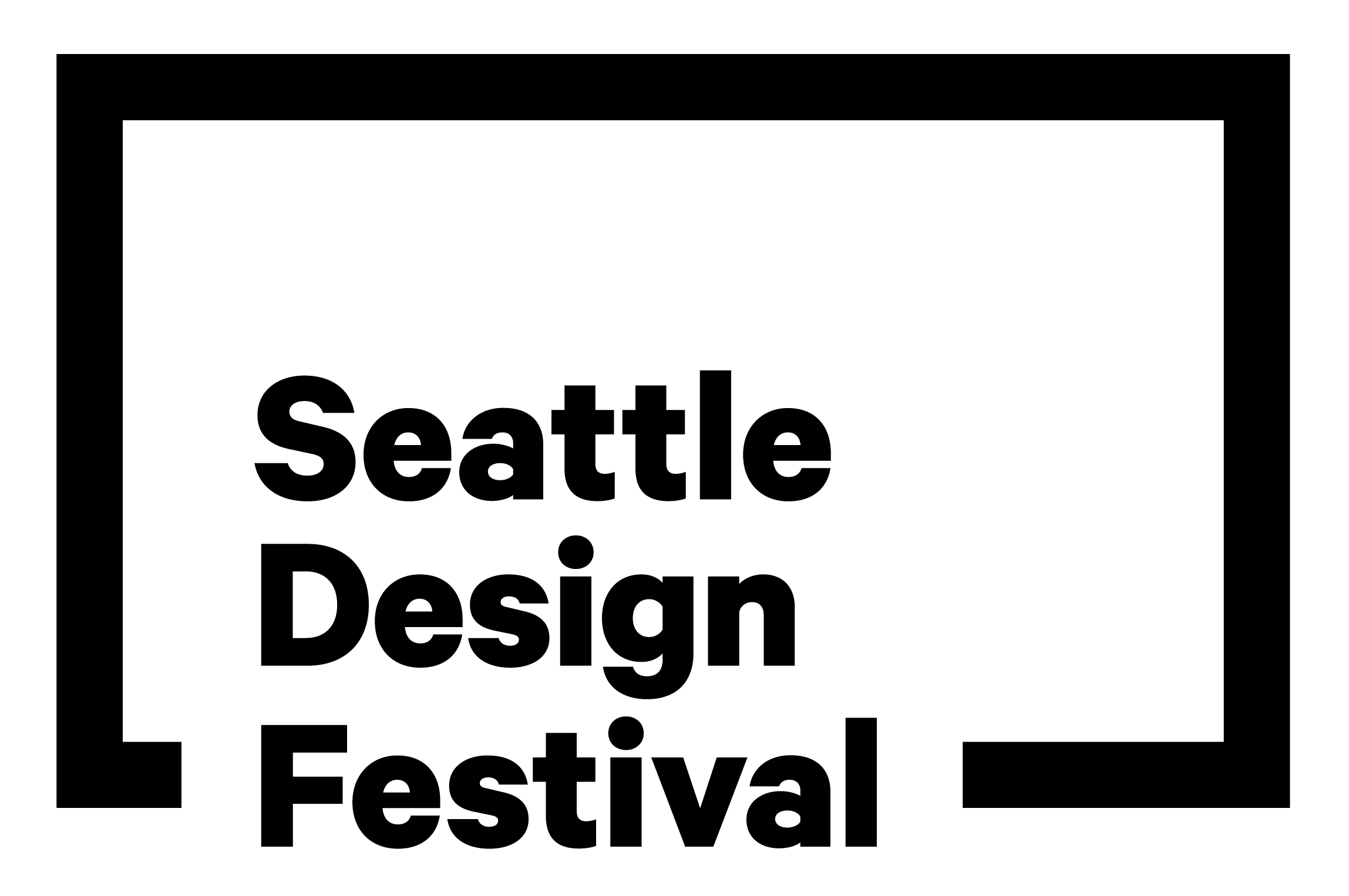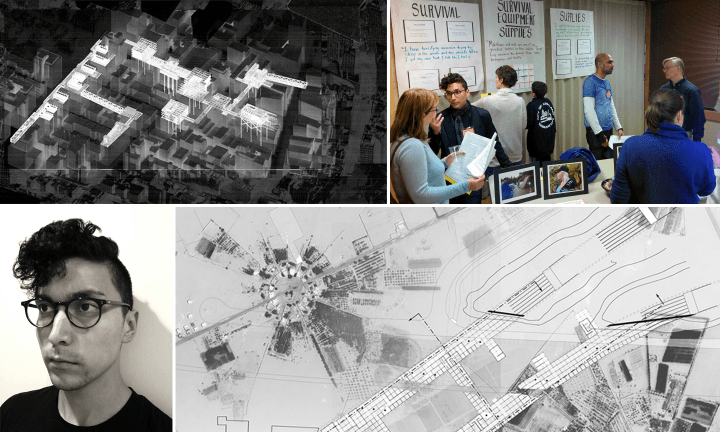Makoto Hamamoto Eyre is an associate at SkB Architects, a Seattle-based architecture firm dedicated to enhancing the human experience of urban spaces through redefining prevalent typologies. He is also one of the founding members of UnityHaus, a small activist group/think-tank of young architects aimed at the issue of homelessness in Seattle, and a graduate of the Bachelors of Architecture program at the Rhode Island School of Design. Having spent most of his life as an urbanite, an aerospace-junkie, and a frequent activist, Makoto’s passion is in rethinking the “human mega-hive” (cities) to better accommodate communities, marginalized populations, and to generate a heightened standard of living for all people. His latest fascination is in formulating the built, technological, and sociological contexts of hypothetical human mega-hive scenarios as a means of planning for, what he projects to be, the inevitable near-futures for humanity and Earth-based life. These machinations are to be episodically shared as parts of a few developing series under his unreleased project, EO Geshdo (“e-o-g”).
Q: Design Change is…
A: a deliberate and proactive interdisciplinary response, or series of responses, to issues plaguing the standard of living of a marginalized collective, or society as a whole.
Q: What should change about design? / What should stay the same?
A: I’d like to see more proactive involvement in cutting edge technologies. Consumer tech is the closest to, if not already fully, having a symbiotic relationship on this front. They pull off incredible things because of it, with designers being key parts of the conversation in UX development for virtual reality software and hardware, for example. Beyond that, however, technologically innovative/involved designers are a niche creature. I am guilty of indulging in this state of comatose, and am making efforts to move beyond it.
///
Our focus on the human experience, social justice/injustice, and environmental/sustainability issues. If there is only one quality a designer should always hold it is, due to the nature of our existence, an activist-level of dedication to improving the life experience for all beings. These fronts (especially environmental) are also, fortunately, the closest instances of greater involvement in technological development and application, which will thus increase our scope of influence/ability to serve.
Q: What’s the big opportunity for design in Seattle?
A: The true strength of design emerges in the well tested and iterated weavings of a range of concepts pulled from a variety of disciplines, especially when generated in response to new conditions requiring attention, communal needs/desires, or common problems. Seattle provides the advantage of having significant contrast between its population/built scale, and the number of resources/skill sets embedded in it.
Here we have individuals and corporations innovating cutting-edge propulsion, transportation, and consumer software and hardware technologies, intense scales of community shredding, gentrification, and homelessness, a rapidly developing public transportation system, a massive burrowing infrastructure project, an active multi-trade port and railroad, two lakes, and the Sound; not to mention an incredibly diverse range of public and private spaces, in various stages of development and success. Meanwhile Seattle is made up of approximately 650,000-700,000 people and 145.2 square miles, ensuring the aforementioned resources and contexts remain abundant and available to those seeking to utilize them. This is the perfect storm for real-world interdisciplinary design prototyping of so many delicious paths of intrigue, especially with the added instability of having so much in flux.
I am convinced that, with the overall population being hyper-aware of the gutting and re-embowling of neighborhoods with a (more often than not) repetitive blandness, there is a willingness, and even a desire at times, to allow for the testing of relatively wild proposals. Our job now is to crack the code. That is, to make friends in various industries, analyze society, identify genuine needs, gather resources, and create prototypes. The process should be risky, and require the occasional instance of forgiveness over permission. I am still trying to figure it out, and I’ve fallen quite a bit, but in the grand scale of things that’s A-Okay. Join me, or better yet, be a competitor.
Q: What influences you?
A: The big duo for me right now is space and our climate changing planet. While the mere ‘frontier’ aspect of these places and points in time are motivation enough to nerd out, they are also realms that hold really complex multi-faceted problems. That is, they generate questions on energy, lifestyle tech, biology, transportation, societal constructs, and spatial definitions. Engaging in these hypothetical scenarios can be great fun, and can also prove to be beneficial to society now and in the near future. For example, reexamining socio-economic constructs can help us identify the pitfalls in our current system that cause homelessness through creating a perceived ‘obsolescence’ of certain personality types. Meanwhile, designing for an assumed climate changed world whose cities are built on retrofitted shipping vessels (not actually, but maybe) provides potential preemptive design responses.
Overall, I find human behavior, both individual and en masse, to be really interesting. What are the causes and effects of our actions and reactions? It is revealing to look into and ponder the root cause/parameters behind classism, racism, sexism, mob mentality, and clan bias, as well as the stigma of sex vs open pleasures of food, our vulnerability to media and marketing, and our ability to imagine beyond what we know (and simultaneously the very restricted scale of this ability). What all of these current manifestations of human behavior say about the human condition can give us clues on alternative structures of society. How can we proactively transcend what we identify as flaws? How can we enhance what we identify as benefits? What are the dangers, if any, in transcending/enhancing them?
Q: What is the quintessential best-designed object or space?
A: There is an 8 minute and 43 second video showing the ignition sequence and initial launch phase of a Saturn V rocket (the actual event is around 30 seconds, and is slowed down for your appreciation). A narrator describes the various carefully calculated events and mechanisms that are playing out in an almost intuitive manner. At one point this narrator points out a dark gas around the edges of the nozzle extension, which soon transitions into a brightly glowing gas. This dark gas, cooler than the brighter glow portion, is exhaust from the turbines that pump the propellant into the engines. It is expelled around the edges of the nozzle extensions, functioning as a protective layer of insulation to said nozzles from the intense heat of the bright gas. It is simply astounding to watch all of the no-waste well-purposed functions play out in such a smooth, and symbiotic manner.
Though this may not be the best designed object, it is a damn impressive example of the caliber of solutions that can be achieved in weaving various systems and concepts. It is also great engineering porn. There’s a related video that shows the Space Shuttle’s STS and SRB boosters. It isn’t as great, in that the beautiful sequencing of designed events are not fully described, but it is still fun as hell to watch.
Title: Apollo 11 Launch in Ultra Slow Motion
URL: https://www.youtube.com/watch?v=vPW7ZqtW5U4
Learn more about Makoto’s work:
Email – makotoeyre@gmail.com





